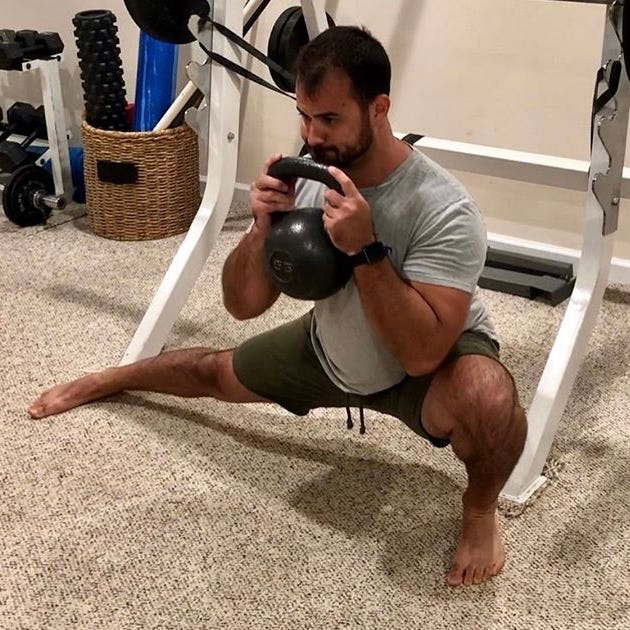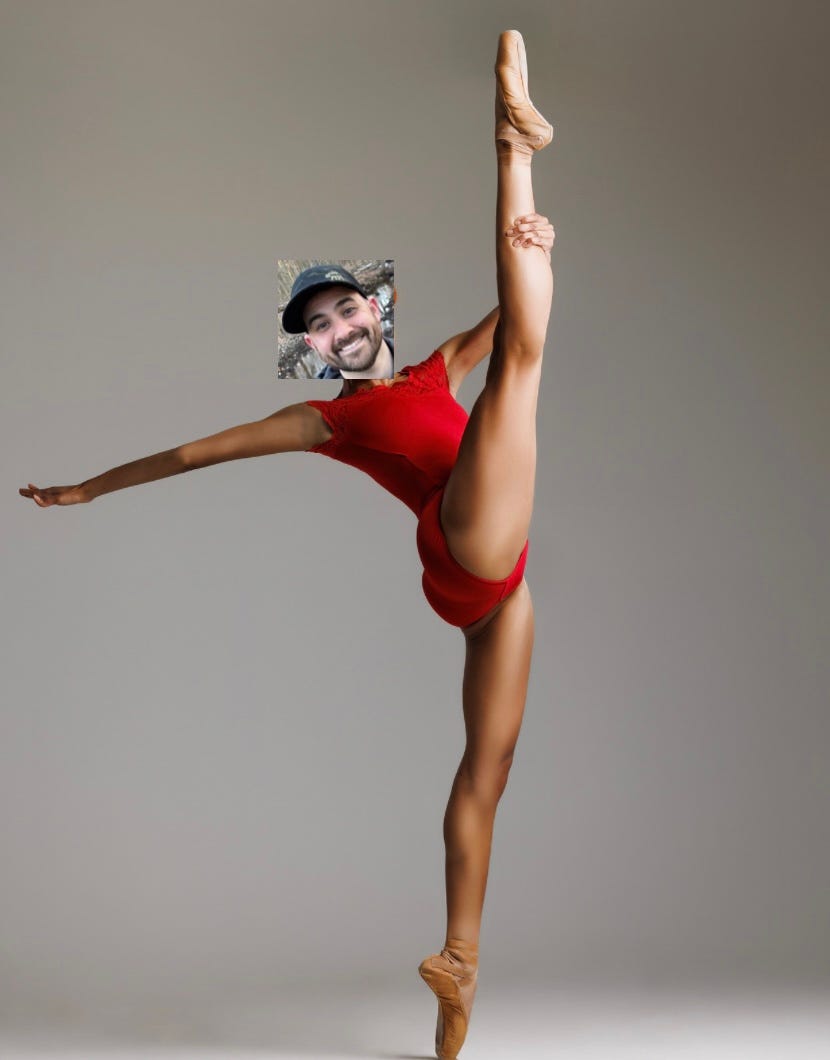The Only Mobility Work You'll Ever Need
Use these five moves to master full body mobility while gaining muscle and strength
In this edition of Momentum you’ll learn the most efficient way to gain full body flexibility and mobility and you’ll learn my five favorite movements for maximizing full body mobility while making gains in strength and muscle.
If you don’t use it, you lose it.
I find this to be true, not in the context that Steve Carrel was talking about in 40 year old virgin, but with the body’s ability to move.
I see patients every day who complain of feeling stiff and not having good enough range of motion to do the things that want to be able to.
This isn’t just older folks… it affects the young, the old, the rich, and the poor alike.
The thing is, if you don’t frequently use your body’s range of motion you can definitely lose it.
If you sit all day and never squat low you may lose the ability to squat low.
If you never reach your arms overhead you may lose the ability to reach your arms overhead.
Now, of course genetics and lifestyle factors play a role in how flexible someone can be.
But, with most things in health and fitness it is a combination of nature and nurture.
For a long time people thought that you had to stretch all day and become a yoga instructor to have great range of motion and flexibility.
Thankfully, this isn’t true.
I don’t really enjoy yoga.
I don’t really enjoy stretching.
I love strength training.
And I also love being efficient.
Why not get stronger, build muscle, and get more flexible at the same time?
That’s what I do. And I’m limber like a ballerina.
Here are five exercises that I have been using for years to improve and maintain my flexibility through my whole body. And yes, this is the only mobility work I do.
For Your Hip Flexors, Quads, & Glutes
If you sit a lot, which most of us do, you probably feel a lot of stiffness in the front of the hips and lower back.
Getting more range of motion into the quads and hip flexors can help a lot with this.
Use these Rear Foot Elevated Split Squats to build muscle and strength in the legs while also increasing range of motion at the hip.
You’ll want to maximize time spent in the bottom position when the hips are most stretched and the muscles are the at their longest length.
If you can’t get all the way down then put a pad or two under your knee and progressively try to get stronger but also lower into the bottom of this movement.
For Your Hamstrings
People often complain about their hamstrings feeling stiff or tight. They can’t bend over to touch their toes and yet despite all the stretching they try to do simply cannot increase the range of motion.
I have found this exercise to be exceptional at increasing hamstring length and developing strong, resilient hamstrings at the same time.
Try these Deficit Romanian/Straight Leg Deadlifts to un-jam your hams.
The key here is to either stand on a plate or box or use small plates like I do in the video to get even more range of motion.
Emphasize a flat back so that most of the stretch happens at the hamstrings and the glutes. For a bonus add a quick pause in the bottom in that maximum stretch.
Can’t get to the floor? Just like the split squats you’ll want to try to get progressively deeper and deeper from workout to workout.
For Your Hips & Groin
One of the biggest complaints I get in the office from patients is that their hips are so stiff.
They can’t get in and out of their car, they have trouble getting out of bed, they can’t clip their own toe nails, they can’t bend down to the ground, etc.
Now that sounds like a problem just for old folks, but I’ve had relatively young people come to me with the same complaint.
Getting your hips open is also crucial for deep squatting, properly swinging a golf club, and hanky-panky.
So, these Cossack Squats are for everyone.
These have been one of the biggest game changers for me and some of my clients to get their hips opened up.
The key here is to keep the trailing leg totally straight to get a massive stretch into the adductors, or inner thigh/groin muscles.
My favorite way to load this movement is with a heavy weight held in the goblet position and again to pause in that deepest stretch.
For Your Chest and Shoulders
It’s almost an instinct to stand up and stretch our arms back after we sit for a long time.
Our body knows what we need.
Like when my body knows I need a vegetable after a weekend of eating meat and drinking scotch…
These slow eccentric, stretch focused Pec Flyes have been really effective for my long-term desk working patients who sit all day with their head forward and shoulders rounded.
For myself, after my shoulder injuries I spent too long avoiding ranges of motion for fear of injuring myself. This left me immobile and in pain quite a bit as I tried to stay active.
This exercise, and the next one, helped me regain a lot of my shoulder mobility back.
You can do these flyes one of a hundred ways and I’d recommend doing them all for a wide variety of motion.
The pec deck with straight arms or bent, pec flyes with cables from high to low or low to high, and doing flyes them with dumbbells will all have a similar effect if you emphasize the deep stretch position.
As with the other movements, continuously try to get deeper into the range. This will help with strength and muscle as well as flexibility!
For Your Back and Shoulders
Another common limitation I see in my clients and patients, young and old, is an inability to fully reach the arms overhead.
Using Pull-Ups / Chin-Ups or Lat-Pulldowns is an excellent way to progressively get your arms up overhead while developing the back.
The key for these to be the most effective is to let your arms drift all the way up for a lat pulldown and to let yourself sink all the way to the bottom in the pull-ups/chin-ups.
Think straight elbows, full reach every single rep.
As with all of the other exercises the goal is to spend some time in that maximum stretch where you let your arms reach all the way up and stretch the lats at the top of each rep.
Some Thoughts on Stretching in General
I don’t think anyone needs to stretch.
There is no evidence that it prevents injuries.
Strength training is more effective at preventing injuries.
It isn’t a good warm-up.
Dynamic movements and exercises that closely mimic what you’re warming up for are more effective.
There is no evidence that it reduces pain more than other, possibly more effective, exercises.
Strengthening exercises and general exercises like walking are probably better choices for pain relief because of the other benefits associated with them like cardiovascular gains and strength gains.
And you can gain as much flexibility with strength training in a big range of motion as you can with stretching.
See everything above.
So, no one needs to stretch.
BUT.
If you like to stretch.
If you love yoga.
If you like pina coladas and getting caught in the rain.
By all means, stretch! Stretch your heart out!
Wrapping Up
One of the best ways to ensure that you gain or maintain full ranges of motion is to frequently use full ranges of motion. Strength training through a full range of motion can develop as much flexibility gains as a stretching routine while also accomplishing the task of gaining strength and muscle making it a more efficient exercise choice.








